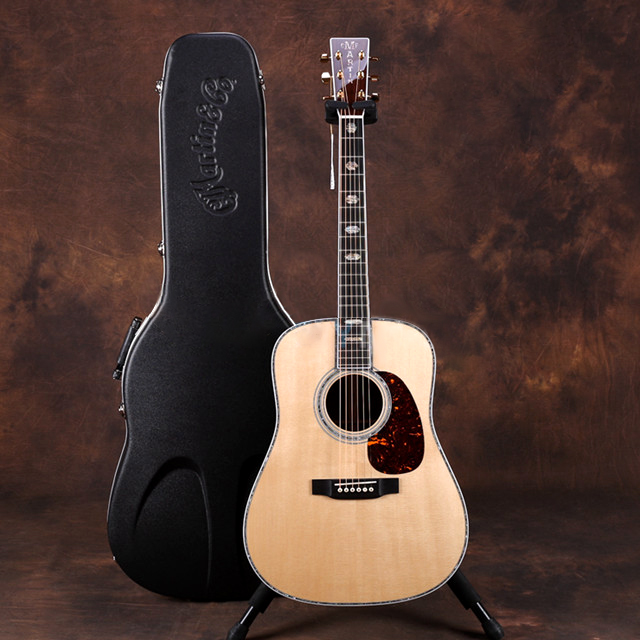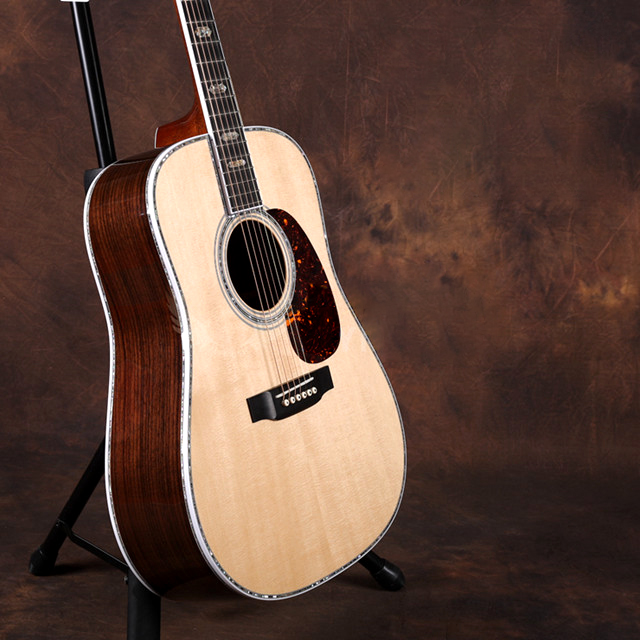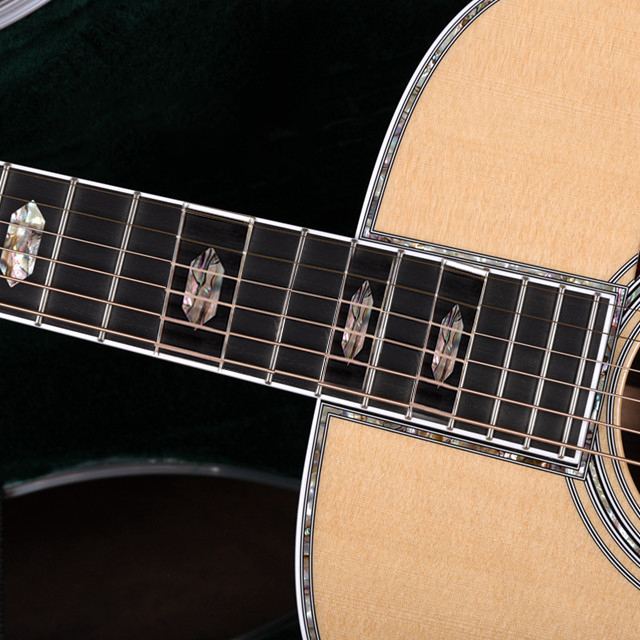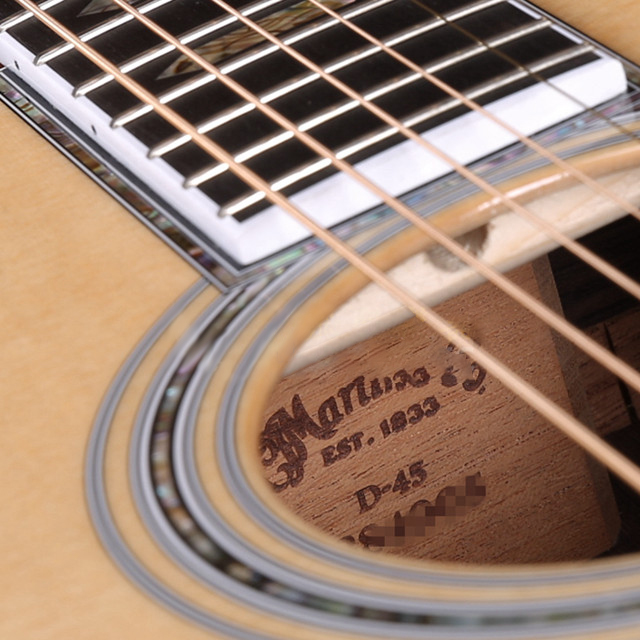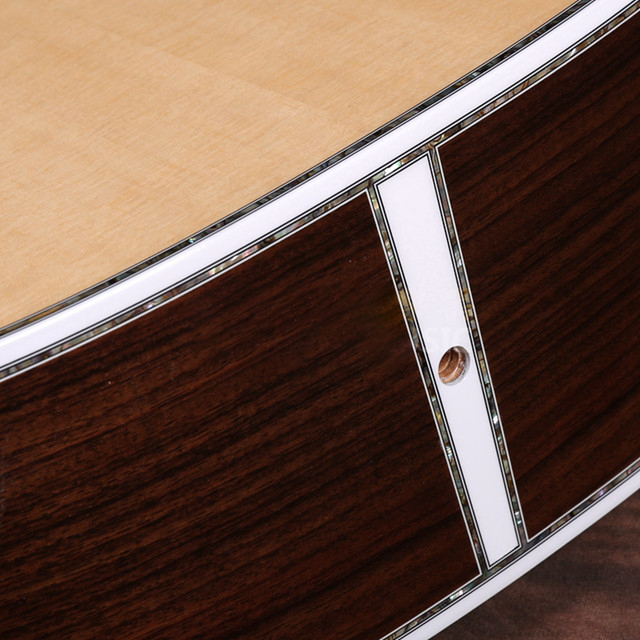Martin history introduction:
For over a century and a half, MARTIN Guitar has long been recognized as the best instrument company in the world. In the traditional family management mode, MARTIN guitar reflects the craftsmanship of the family’s six generations of guitar. Christian Fredrick Martin, the founder of Martin, was born in 1796 on the banks of the River Elbe in Germany. Father is a carpenter. At the time, the guitar was not recognized by people. His father offended the local violin maker for selling homemade handmade guitars. (Probably the violin maker at the time had formed an artist class, and the great Martin as a carpenter was only a civilian.) In 1807, his father was ordered to close down. After mastering the initial knowledge of guitar making, Martin came to Vienna, the capital of music, to become a master of violin and guitar, the disciple of John. (By the way, Schubert likes to use the violin made by Old John.) After marrying in Vienna, Martin returned to his hometown and obtained a formal license for guitar manufacturing. In order to get rid of the interference, he moved to the United States. Because the earliest Martin guitar had the words “EST.1833”, it was widely believed that his time to move to the United States was 1833.
In the second year (1834), at the 6th Hudson Street in New York, he opened his first guitar store. However, in the process of rapid urbanization in New York, in 1839, in order to seek a more stable living environment, in 1839, it was recommended by friends and moved to Pennsylvania. The guitar he produced here was sold by the guitar classroom that John Cooper coached. The works of this period are similar to those of Old John, for example, similar to Fender’s single-row reel, which adjusts the angle of the guitar neck. From the 40s to the 50s, Martin focused on the interior design of the guitar. He added X-shaped force wood to the inside of the watch board , which is more powerful than the previous fan design. In 1856, when the X-type design study came to an end, a boy named Gibson was born in New York. The Martin guitar at the time was basically finalized. Martin I, who accomplished these great achievements, died in 1873 and took over as a nephew, C.F Martin Jr. Due to his illness, Martin II died at the age of 83 in 1888, and his son Frank. Henry. Martin inherited their last wishes. In 1894, about 60 years later than Martin I, Gibson, a shoe store clerk, began to turn to instrument production.
The model of the Martin guitar is mostly expressed in Roman numerals or numbers. The series produced in 1850 is represented by the four numbers 3,2-1/2,2,1. In 1854, the size of the guitar began to unify. Added 0 and 4, 4, and 3 models, and in 1877, the 00 model appeared. Until recently, I also thought that 0 is the Roman word O corresponding to D. After reading the relevant books, I realized that it should be the number 0. The model setting process starts from 17, 20, 23 in 1856 to the five models (17, 18, 21, 28, 40) that appeared in 1898. In 1890, the bridge was also modified into a rectangular shape made of mahogany and ivory. In 1904, after the 20th century, the success of the trial production was arguably the 45 model, and in 1904, it officially introduced 0-45, 00-45. In 1920, the steel string was changed from fir to mahogany, and in order to increase the strength, appropriate ebony was also incorporated. In 1934, an attempt was made to add a T-shaped iron (cross-section T-shaped).
The world is caught in the panic of war, Martin still insists on the study of steel strings in a difficult environment. Due to the strong pulling force of the steel string, the bridge was improved. On the basis of the original rectangle, the middle portion was widened. At this time, the paint was finally finalized. In the same year, at the request of banjo player Bailey Viktor, the first 14-piece guitar was produced. In order to suit the habits of Banjo players, the head is imitated by Banjo and has two more items than the average guitar. Also in the same year, the Model 000 was redesigned and in 1933 an OM (orchestral model) type of 14 products was produced. The length of the original 000 neck is 632.5mm, while the modified OM is 645.2mm. Due to the small number of productions at the time, OM is now a collector’s edition.
Perhaps, there is some repetition in the narrative of time, but it is worth mentioning that a product in 1916 has had a major impact on today’s guitar. At that time, Martin produced a series of guitars for a music house in New York. He listened to the advice of Henry of the music company and began to design the guitar for the singer. Because the body is unprecedented, it is named after the British warship and is referred to as the D type. After that, the spruce and mahogany were used as the body, and the 12, 111, 222, and 333 models were produced. But in fact, in 1931, the company began to produce Martin’s 12-fret guitar, the D-1 and D-2 at the time, the later Martin D-18 and Martin D-28 predecessors. The D type has almost become synonymous with guitar, and the shape of the body has become the standard of the wooden guitar. In the old D-28 model, there is a special treatment called “Hailinbo” (transliteration). The interior of the edge of the body is specially decorated. In 1946, before and after the end of production of “Hailinbo”, the Martin D-28 appeared in the shape of a force wood, and the inside of the board and the center line decoration changed, which was welcomed by customers.
The old guitar represented by Martin Guitar has great differences in price due to the difference in age and style. Among the Martin guitars, until 1969, the Brazilian rosewood was used as the material, the guitar with the model number above 28, and the guitar with the Indian rosewood after 1970, even between the same models. There are significant differences. Brazil – In order to protect the domestic wood processing industry, the export of logs is prohibited. Therefore, Martin, which originally relied on Brazilian logs, had to switch to Indian rosewood. Among the Martin products, the Martin D-45 reproduced in 1968 and the Martin D-41 guitar produced until 1969 were made of Brasilia rosewood. However, the production period is very short and the production is extremely limited (about 230 for Martin D-45 guitar and about 50 for Martin D-41. By 1969, Martin D-35 guitar , Martin D28 guitar , Martin D-21, etc. were discontinued.
In the 1940s, the number of Martin D28 guitar productions after the war was reduced, and with minor changes in style, there are still various styles. In 1942, a trademark called “sloted diamond” and a rear open type stringer were used. In 1944, due to the increase in the number of people using high-strength strings, 12 banjos were produced using the current interior design. In 1945, the trademark became a circular design. In 1946, it evolved into what it is today. In the colorful historical development process, MARTIN has successfully adapted to the improvement and transformation of product design, promotion and manufacturing methods. Despite many changes, C.F. MARTIN has never changed its initial commitment to the quality of goods.
